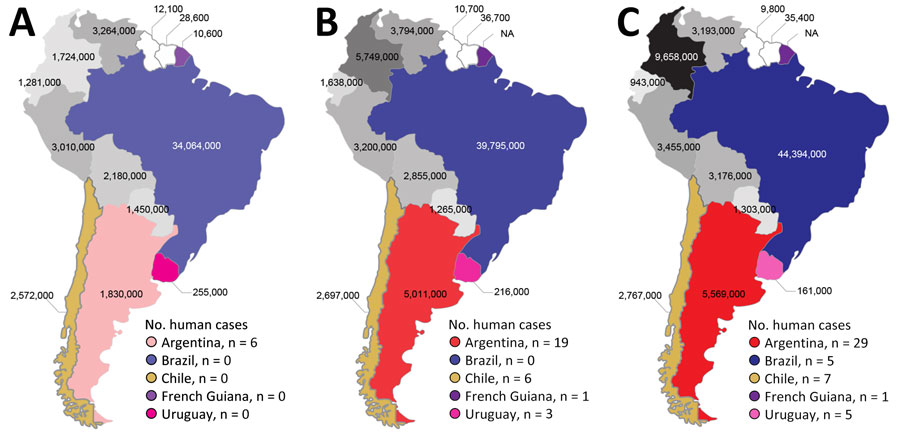Volume 31, Number 7—July 2025
Synopsis
Human Streptococcus suis Infections, South America, 1995–2024
Figure 2

Figure 2. Estimated number of swine and cumulative reported human cases per country in a study of human Streptococcus suis infections, South America, 1995–2024. Shown are countries with human S. suis infections reported during 1995–2005 (A), 1995–2015 (B), and 1995–2024 (C). Estimated number of heads of swine is shown for each country from 2005 (A), 2015 (B), and 2022 (C). Countries with reported human S. suis infections are depicted in specific colors, and cumulative number of human cases during each timeframe are provided in each key. The color intensity increases proportionally to reflect changes in swine population size over time in each country. In contrast, countries without reported human S. suis infections are represented in grayscale, and the grayscale intensity indicates variations in swine population size, applied on a unified scale across those countries. Swine production data for French Guiana was only available until 2006. NA, not available.